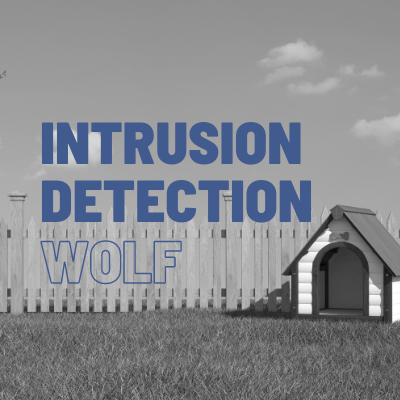Intrusion detection is the oldest form of security and notification that we have. Before electronics were even invented, mankind has set up warning systems for itself, whether in the form of cans strung on a wire, strategically placed dogs (like me) on the property, or horses getting worked up and making noise. We have always been interested in protecting what is ours, and intrusion detection is our first method of trying to retain control over these environments.
With the advent of electronics, of course, everything became automated. Luckily we have grown past the need to attach tin cans to strings, and string up our perimeters. We detect intrusion today, with a variety of devices meant to capture our family’s and our property’s well-being. Motion sensors, door contacts, glassbreak sensors, are the primary devices used in a traditional intrusion system. You have very likely owned a system like this in your home. It is networked to a monitoring station, which are manned by live personnel who handle alarm events and are then responsible for contacting the authorities to get them on their way to investigate, if one of these systems is in armed status and one of the devices on the system is triggered. The concept being, you as an individual cannot have eyes and ears at your home or property 100 percent of the time. Having someone always there to monitor the status of your intrusion detection system, has provided countless people with the peace of mind that we need, to leave our homes or businesses, as we participate in areas of life that lead us away from these places temporarily.
Commercially, traditional intrusion systems, the systems being armed and disarmed by numerical keypads and monitored by 3rd parties, are becoming less important as standalone systems, and rather more and more ingrained into other aspects of a comprehensive security solution. Door contacts are used in access control solutions. Motion sensors can be married to specific cameras, or to specific doors, giving both an overall increase in value and production. Virtually every camera manufactured today, uses motion sensors in their lenses for multiple uses. Perimeter fencing can be set up with beams, that when crossed, trigger programmed alarm events. Radar units are an even better method of capturing motion on large areas of property, and subsequently, according to how the user’s events are programmed, can quickly begin a pre-defined process meant to start toward a resolution of the event. Typically, a good resolution is that the intruding party leaves the premises quickly. Less favorable resolutions can involve on-site security personnel, or the alerting of authorities of an intrusion event happening in real time. However, we end up setting up the system to act upon event triggers, these events are always initiated by an intrusion detection device.
Most higher ended commercial customers already have an idea already of how they would want intrusion events to be handled. In addition to involving the authorities, the trigger can send either automated voice recordings or live talkdowns through a nearby speaker. The trigger can start a lockdown event where the doors will not be operable even with approved credentials, until the lockdown is lifted by an administrator. The trigger can notify anyone who is put on the notification list to be notified for these events, so that they can then get involved to do their part toward the resolution of the intrusion event. The trigger can create a case within the video management system, that will provide immediate access to footage associated with the event. The trigger can send a signal to a relay, which can then be wired to any automated device, provided the legality is not in question (we cannot entrap someone within a facility for any reason, we cannot provide a violent reaction or anything which would cause bodily harm to a human). The actual possibilities that intrusion detection devices can now be used for, are becoming boundless as technology continues to improve.
While the reasons that we use intrusion detection have evolved, and the need for standalone intrusion systems have waned, the intrusion detection concept itself remains the most important way to define the beginning of a security breach. The other aspects of security such as video and access control, have adopted pieces of intrusion into their own architecture to enhance their own processes. Mankind will always want its warning systems, and intrusion detection has always been the first part of our reaction!





